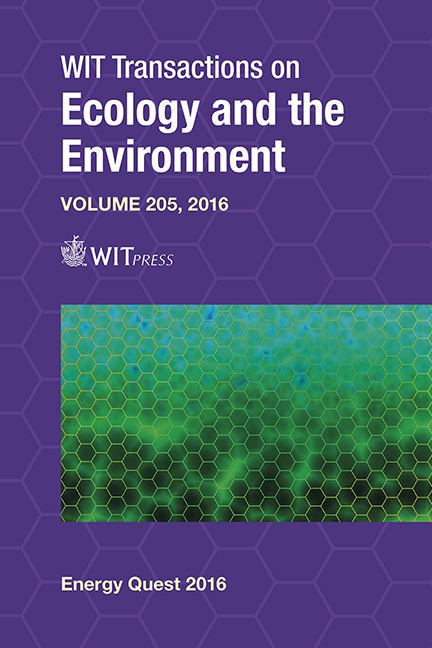Energy Performance Investigation Of A District Cooling System
Price
Free (open access)
Transaction
Volume
205
Pages
10
Page Range
157 - 166
Published
2016
Size
747 kb
Paper DOI
10.2495/EQ160151
Copyright
WIT Press
Author(s)
A. Bukshaisha, A. H. Beitelmal
Abstract
A steady-state model is developed to investigate the effect of the chilled water supply temperature and the inlet condenser water temperature on the performance of the centralized chiller system. The current results show that increasing the chilled water supply temperature by 1°C increases the coefficient of performance (COP) of the chiller by 1% to 3% and reduces the total cooling system power consumption by an average of 2% when operating the chiller system at the design capacity level. Decreasing the entering condenser water temperature by 1°C increases the chiller COP by an average of 2% and reduces the total power demand by an average of 1.5%. The reduction in the power consumption translates into a measurable annual reduction in CO2 emissions. The amount of CO2 emissions reduction depends on the type of fuel used to produce the electricity available for the chiller system. The current results also show that the chilled water temperature can be safely raised to a higher set point temperature than the industry standard set point of 5–6°C while preserving the cooling capacity requirements. In addition, the current results suggest that chilled water supply temperature set point of 8°C to 10°C (46°F to 50°F) would provide energy savings of 5% and 9.8%, respectively, over the base case used of 6°C while reducing the carbon footprint by the same percentage.
Keywords
district cooling, centralized chiller system, HVAC, energy efficiency





